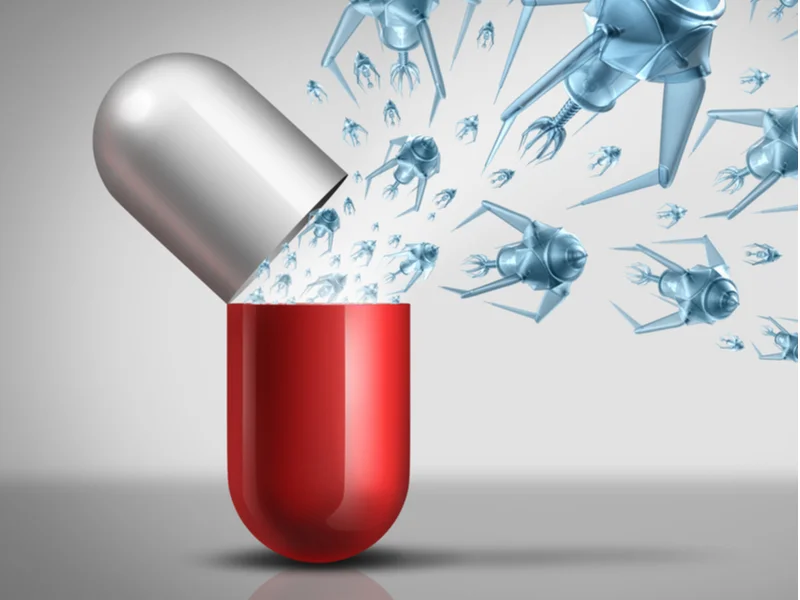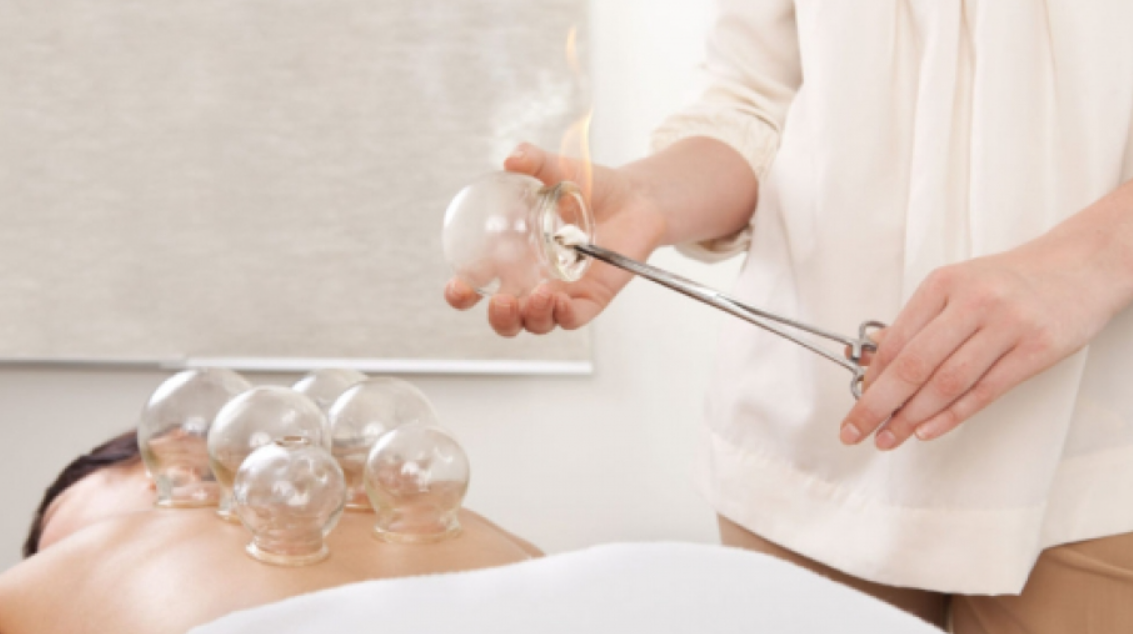[ad_1]
Hello Nature readers, would you like to get this Briefing in your inbox free every day? Sign up here.
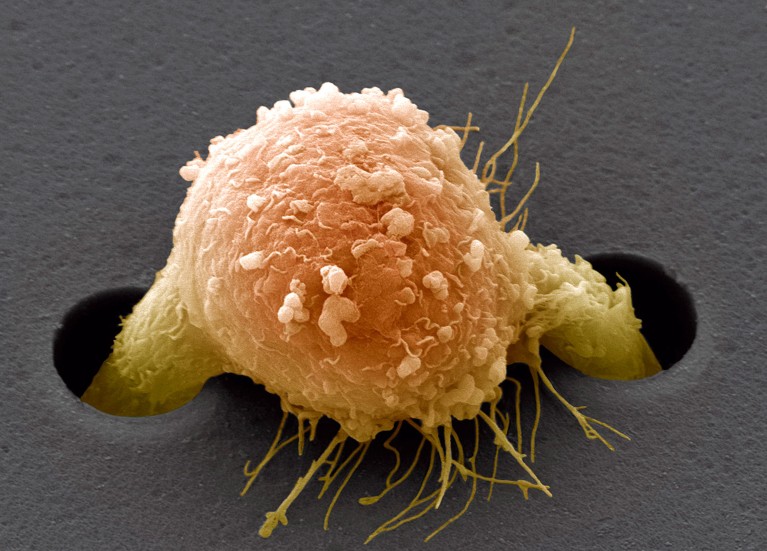
A breast cancer cell (artificially coloured) climbs through a supportive film in a laboratory experiment.Credit: Steve Gschmeissner/SPL
An artificial intelligence (AI) tool could help to identify the origins of cancers that have spread from a previously undetected tumour somewhere else in the body. The proof-of-concept model analyses images of cells from the metastatic cancer to spot similarities with its source — for example, breast cancer cells that migrate to the lungs still look like breast cancer cells. In dry runs, there was a 99% chance that the correct source was included in the model’s top three predictions. A top-three list could reduce the need for invasive medical tests and help clinicians tailor treatments to suit.
Reference: Nature Medicine paper
US politicians sparred yesterday in the latest of a series of public hearings, notionally about the origins of the SARS-CoV-2 coronavirus, that have highlighted the polarization of US politics. Science editor-in-chief Holden Thorp was in the hot seat as Republicans alleged that government scientists unduly influenced the editors of scientific journals and that, in turn, those publications suppressed the lab-leak hypothesis. Democrats lambasted their Republican colleagues for making such accusations without adequate evidence and for undermining trust in science.
Last week, the top European human-rights court ruled in favour of a group of more than 2,000 older women who said that the Swiss government’s climate inaction violates their right to life and health. But what do such wins actually achieve? Plenty, say analysts: a pivotal case against the Dutch government transformed climate investment and energy policies in the Netherlands. And a case brought by young activists in Germany led to a strengthening of the country’s climate-change targets. In the private sector, litigation has been shown to curb greenwashing and dent company valuations and share prices. And even cases that fail in the courts can raise public awareness of climate issues and help other cases.
Read more: These veteran female activists are fighting a pivotal climate case with science (Nature | 6 min read, from 2023, paywall)
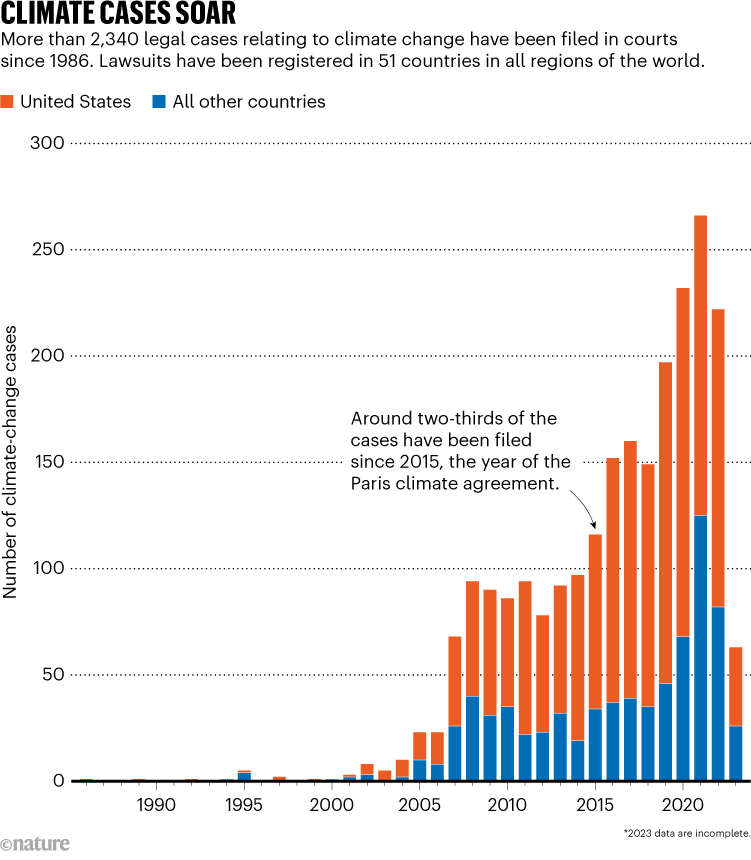
Source: Grantham Research Institute/Sabin Center for Climate Change Law
Features & opinion
Evidence is growing that targeted dietary interventions can treat, delay and even prevent some illnesses.
• The DASH diet — yes to fruits, vegetables, whole grains and low-fat dairy; no to salt, saturated fat and booze — offers a promising alternative to medication for people with early-stage hypertension.
• The Mediterranean diet — largely similar, but you get moderate amounts of red wine and salt, sometimes supplemented with extra-virgin olive oil or nuts — is associated with positive changes in polycystic ovarian syndrome.
• There are early hints that some people with neurological disorders, from migraine to Alzheimer’s disease, might benefit from avoiding some ingredients, such as caffeine, and including others, such as specific fats.
Researchers caution that more evidence is needed, but large-scale randomized trials of dietary interventions are difficult to conduct, especially where people can’t afford to change what they eat. Policymakers have a role to play, say scientists: stop subsidizing the ingredients of cheap, processed foods and invest in making healthy options easy and accessible for all.
Reference: Hypertension paper & Nutrients paper
Reviewers should be guided by a transparent set of questions to help make peer-review as trustworthy and robust as possible, suggests Mario Malički, the co-editor-in-chief of the journal Research Integrity and Peer Review. “For example, editors might ask peer reviewers to consider whether the methods are described in sufficient detail to allow another researcher to reproduce the work,” says Malički. “Other aspects of a study, such as novelty, potential impact, language and formatting, should be handled by editors, journal staff or even machines, reducing the workload for reviewers.”
Infographic of the week
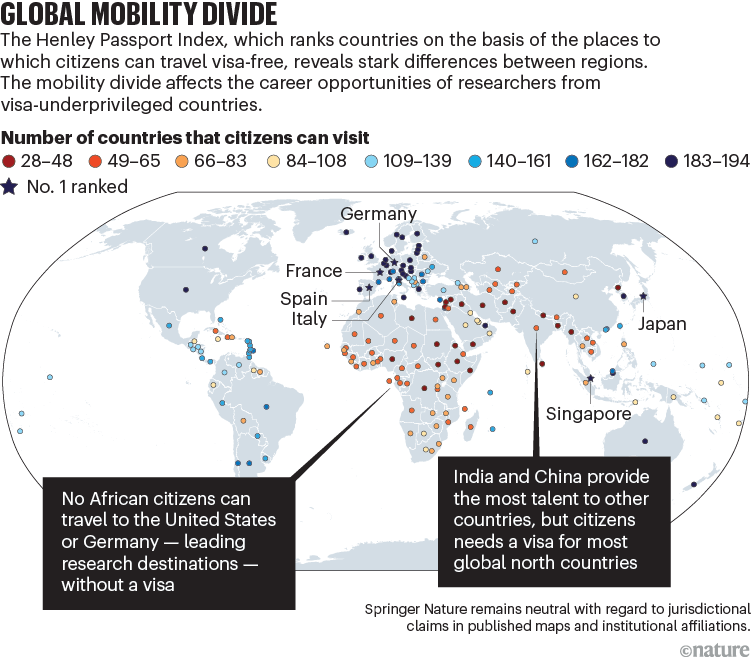
People from sub-Saharan Africa pay three weeks’ wages, on average, for a tourist visa to another country. Citizens in Western Europe pay less than an hour’s salary. It’s just one example of how some researchers face often-distressing immigration bureaucracy that others do not, write US-born sociologist Tiffany Joseph and systems biologist Mayank Chugh, who was born in the global south. They outline six steps that academics can take to rebalance the scales. (Nature | 8 min read)
In November, I shared with you our sorrow that senior careers editor Karen Kaplan — who commissioned many of the stories that I know to be Briefing readers’ favourites — had died, aged 64, of a rare head and neck cancer. Her dedication to showing the real-life diversity of scientists drove her to co-develop our award-winning ‘Where I Work’ series. That series is now on display as a beautiful large-scale photography exhibition, dedicated to Karen, near the Nature offices in King’s Cross, London. If you’re nearby, do drop by (it’s free). Otherwise, check out the virtual exhibition online.
Thanks for reading,
Flora Graham, senior editor, Nature Briefing
With contributions by Gemma Conroy
Want more? Sign up to our other free Nature Briefing newsletters:
• Nature Briefing: Anthropocene — climate change, biodiversity, sustainability and geoengineering
• Nature Briefing: AI & Robotics — 100% written by humans, of course
• Nature Briefing: Cancer — a weekly newsletter written with cancer researchers in mind
• Nature Briefing: Translational Research covers biotechnology, drug discovery and pharma
[ad_2]
Source Article Link


